There are many great reasons to incorporate yoga into your routine. Yoga improves muscle tone, flexibility, strength, and balance. It helps you relax and reduce stress, thanks in part to its signature pranayama breathing. Research has also shown that yogic practices also reduce stress, anxiety, depression, and chronic pain; help you sleep better; and enhance overall well-being and quality of life.
Ready to give it a try? Here are ten beginner poses — called “asanas” in Sanskrit— recommended by Sri Sri School of Yoga.
1. Cat – cow pose (Marjariasana)
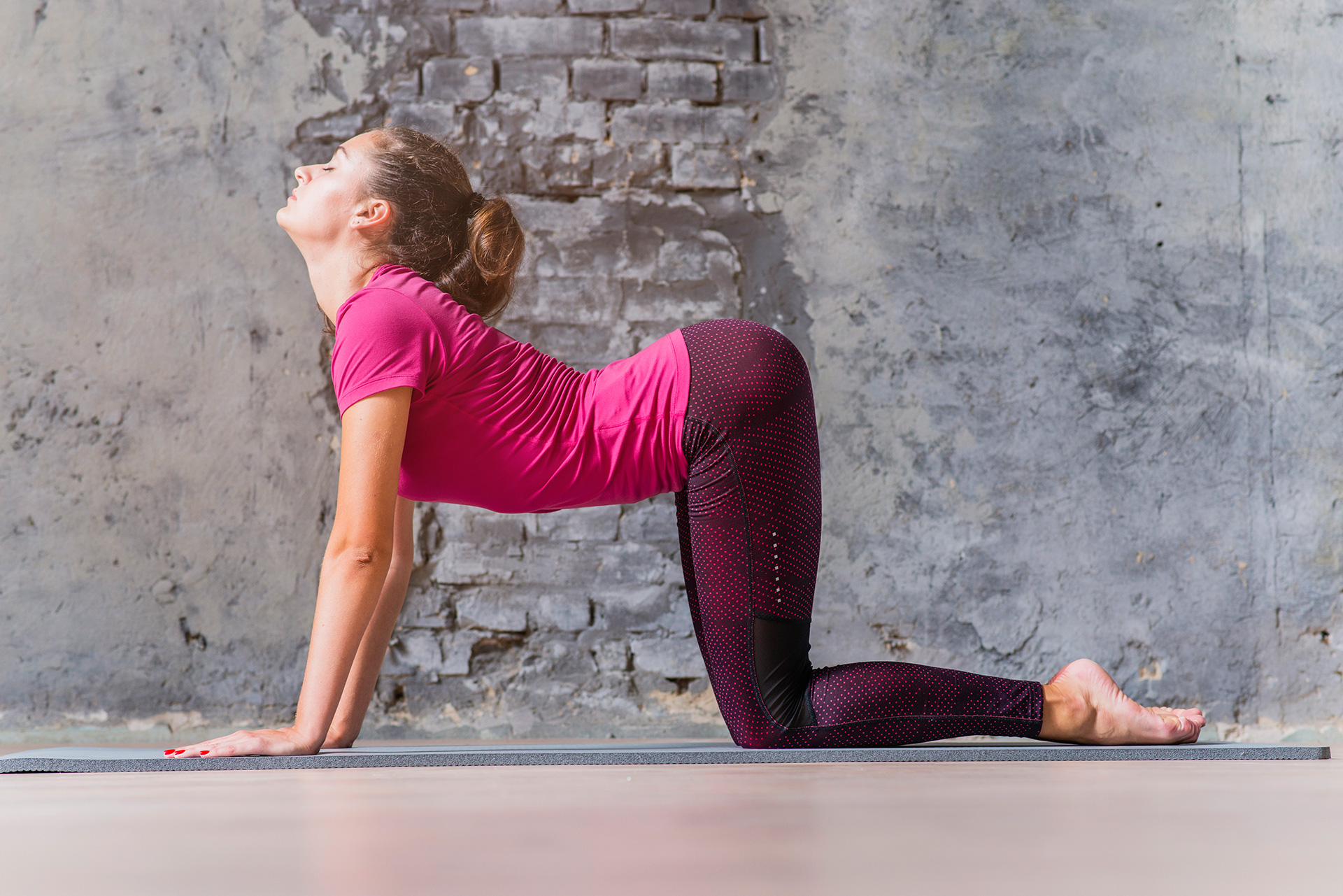
Cat-cow is a great way to warm up your back and work your core without the extra stress on your wrists and shoulders that you might feel in other poses like down dog.
How to:
Get on your mat on all fours with your hands directly below your shoulders and your knees directly below your hips. Distribute your weight equally between your hands and spread your fingers wide. Inhale and round your back, arching it up as you lower your chin to your chest; feel the stretch from your neck to your tailbone, like a cat. As you exhale, lower your back down all the way to a scoop shape as you lift your head, and tilt it back.
Benefits:
This beginner yoga pose improves digestion. It relaxes the mind. It makes the spine flexible and strengthens knee, wrist, and shoulder joints. In addition, the cat-cow pose relaxes the mind.
2. Child’s pose (Shishuasana)
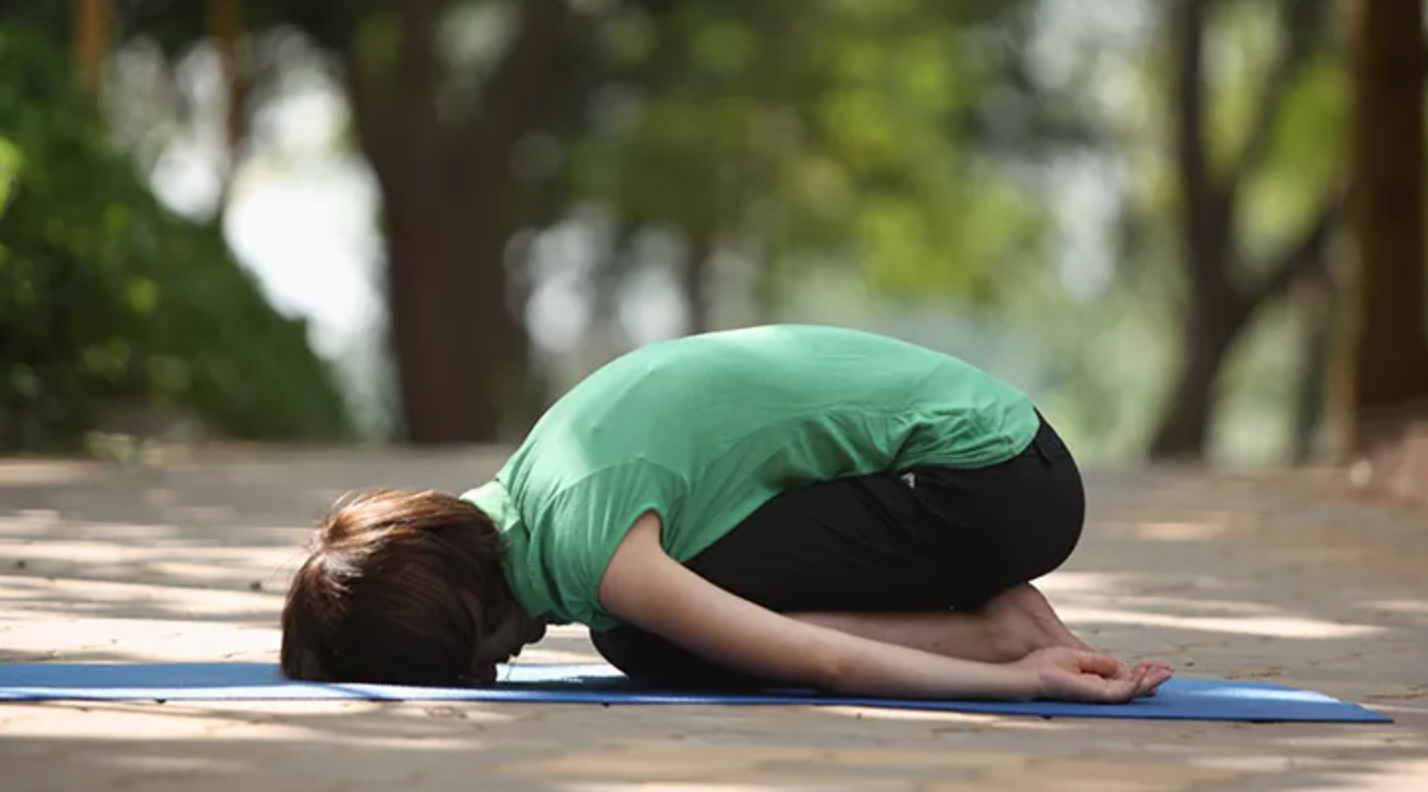
Consider this pose as your reset moment. It is a great place to take a breather during class if you need one.
How to:
From cat-cow pose, simply lower your butt to your heels as you bring your chest toward the floor over your knees. Lower your shoulders and head to the floor. Place your arms along your sides, palms down, or you can support your head by folding your arms under your forehead. Breathe and relax for as long as you need to.
Benefits:
This easy yoga pose allays constipation and soothes the nervous system. The child’s pose stretches each hip, thigh, and leg muscle.
3. Downward facing pose (Adho Mukha Svanasana)
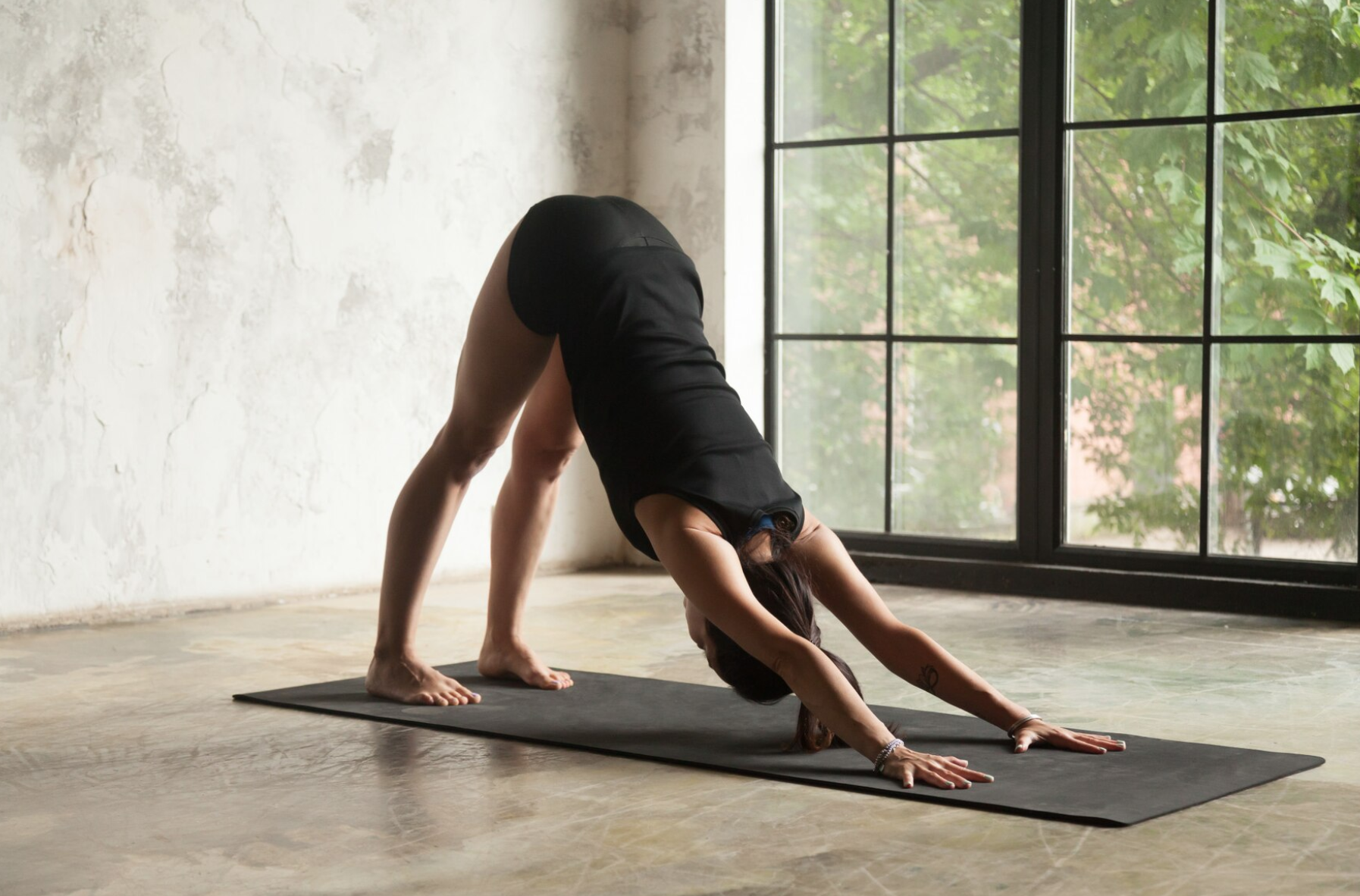
One of the most recognizable and popular poses of the bunch with lots of strength building benefits.
How to:
In the downward facing dog pose, your body forms an inverted V-shape. Start by placing both hands on the mat in front of you, palms down; your hands should be slightly in front of your shoulders. Place your knees on the ground directly under your hips. Exhale as you lift your knees off the ground and lift your buttocks and hips toward the ceiling. Push the top of your thighs back and stretch your heels down toward the floor. Keep your head down between your upper arms and in line with them, not hanging down. If you notice your lower back rounding, try bending your knees to help lengthen your back.
Benefits:
Downward facing dog calms the nervous system, works on overall flexibility, decompresses the spine, tones the arms, sculpts the legs, and opens the shoulders.
4. Bound angle pose (Baddha Konasana)
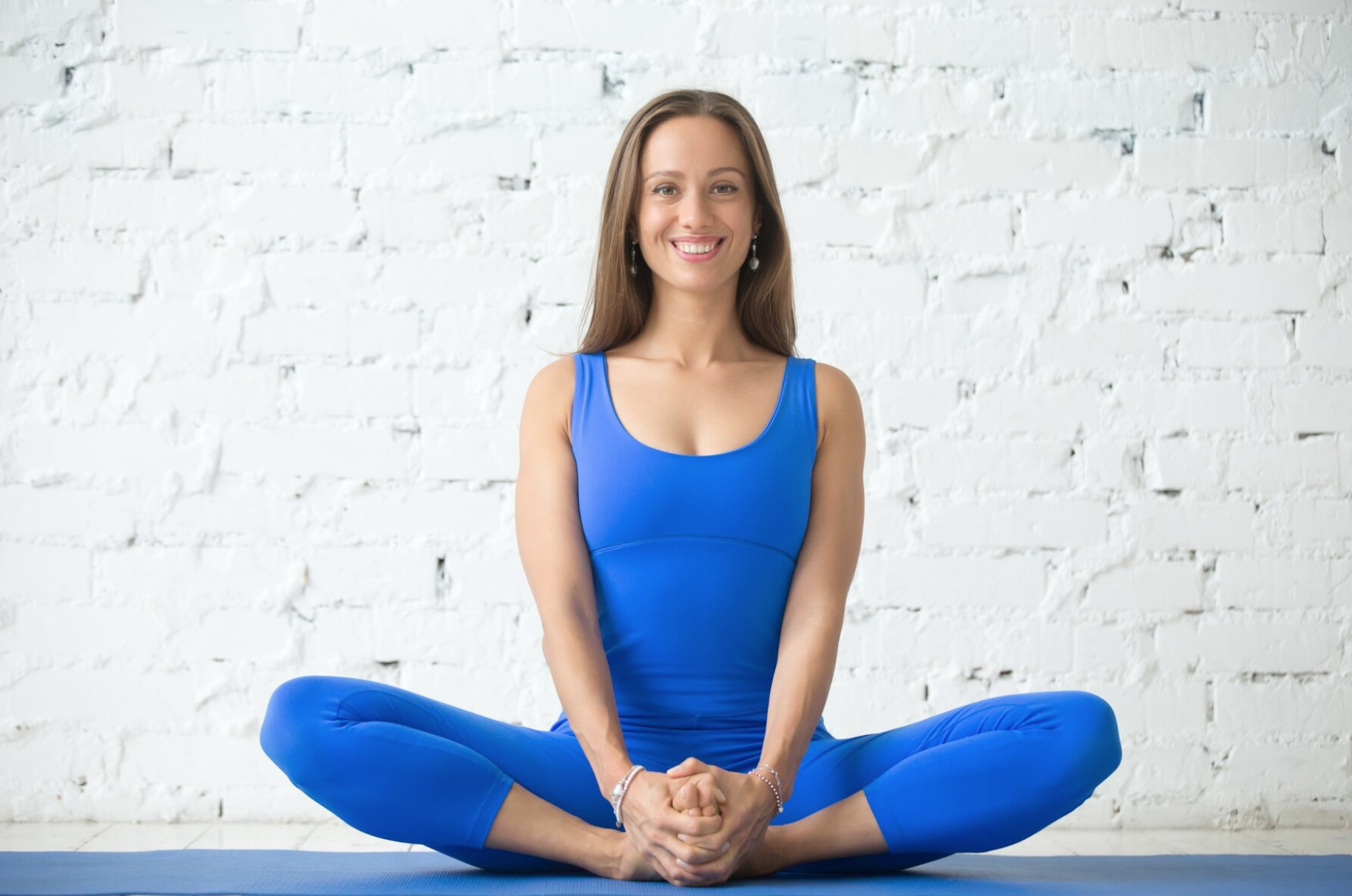
This pose is popularly known as Butterfly Pose due to the movement of the legs, which gives the appearance of a butterfly flapping its wings.
How to:
Sit comfortably with your legs stretched in front of you. Fold your knees and bring your feet closer to your pelvis with the soles touching each other. Sit straight and breathe.
Benefits:
This seated pose improves bowel movements and flexibility in the groin and hip region. The bound angle pose also helps relieve menstrual discomfort.
5. One-legged forward bend (Janu Shirasana)
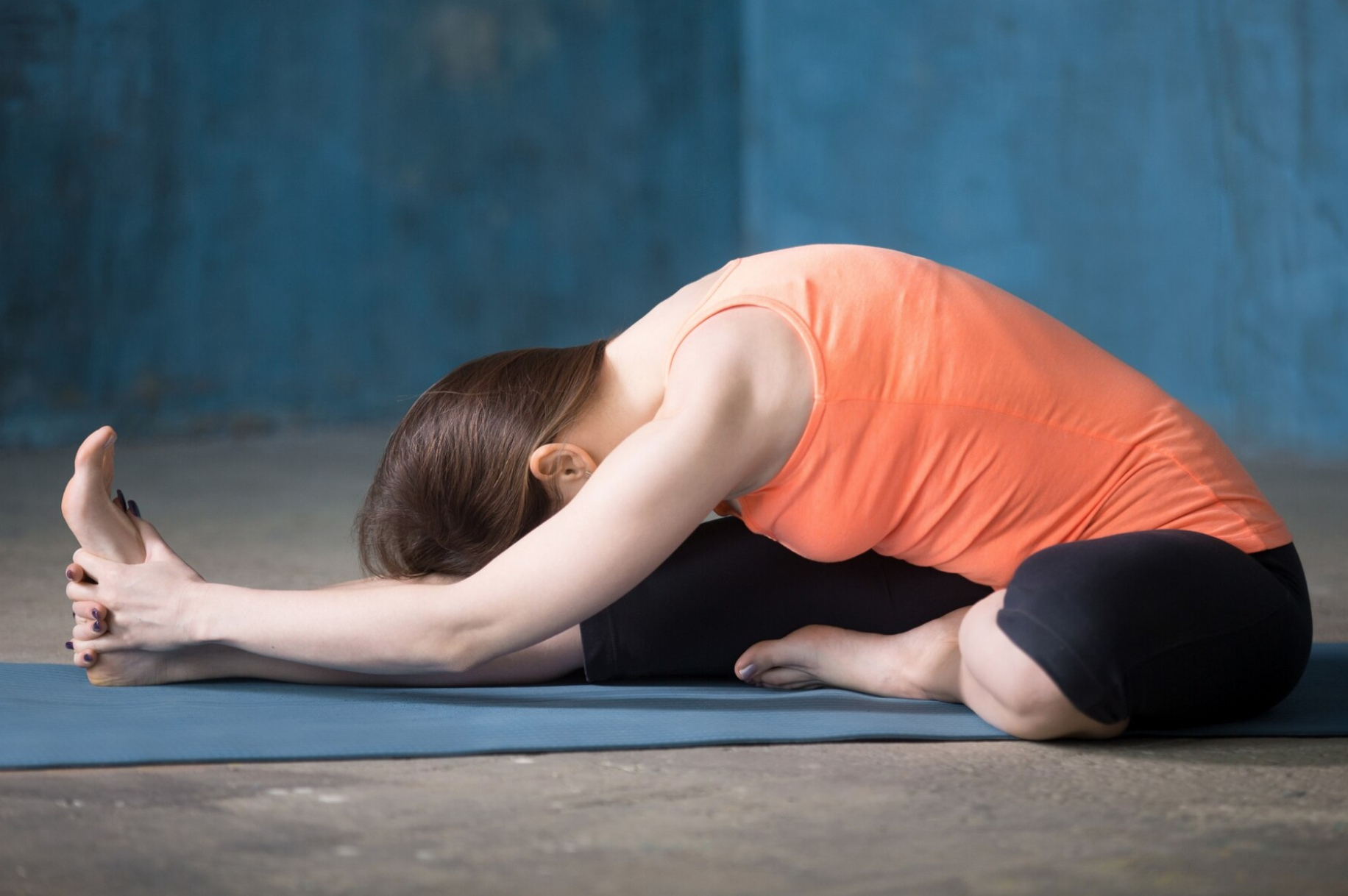
This is an excellent pose for practitioners of all levels. The pose provides a full-body stretch and provides a mild spinal twist. The pose gets its name from the Sanskrit words janu, meaning knee, sirsa, meaning head, and asana, meaning pose.
How to:
Sit comfortably with your legs stretched out straight in front of you, keeping your spine erect.
Bend your left knee and place your left foot against your right thigh, keeping your left knee on the floor. Breathing in, raise both arms above your head and stretch up. Twist slightly to the right from your waist. Breathing out, bend forward from your hip joints leading with your chin, keeping the spine straight. Hold for a few seconds. Breathing in, coming up and breathing out, bring your arms down to your sides. Repeat on the other side.
Benefits:
The one-legged forward bend is a foundational yoga pose that stretches the lower back. It massages the abdominal and pelvic organs and tones the shoulders, stretching the shoulder blades.
6. Mountain pose (Tadasana)
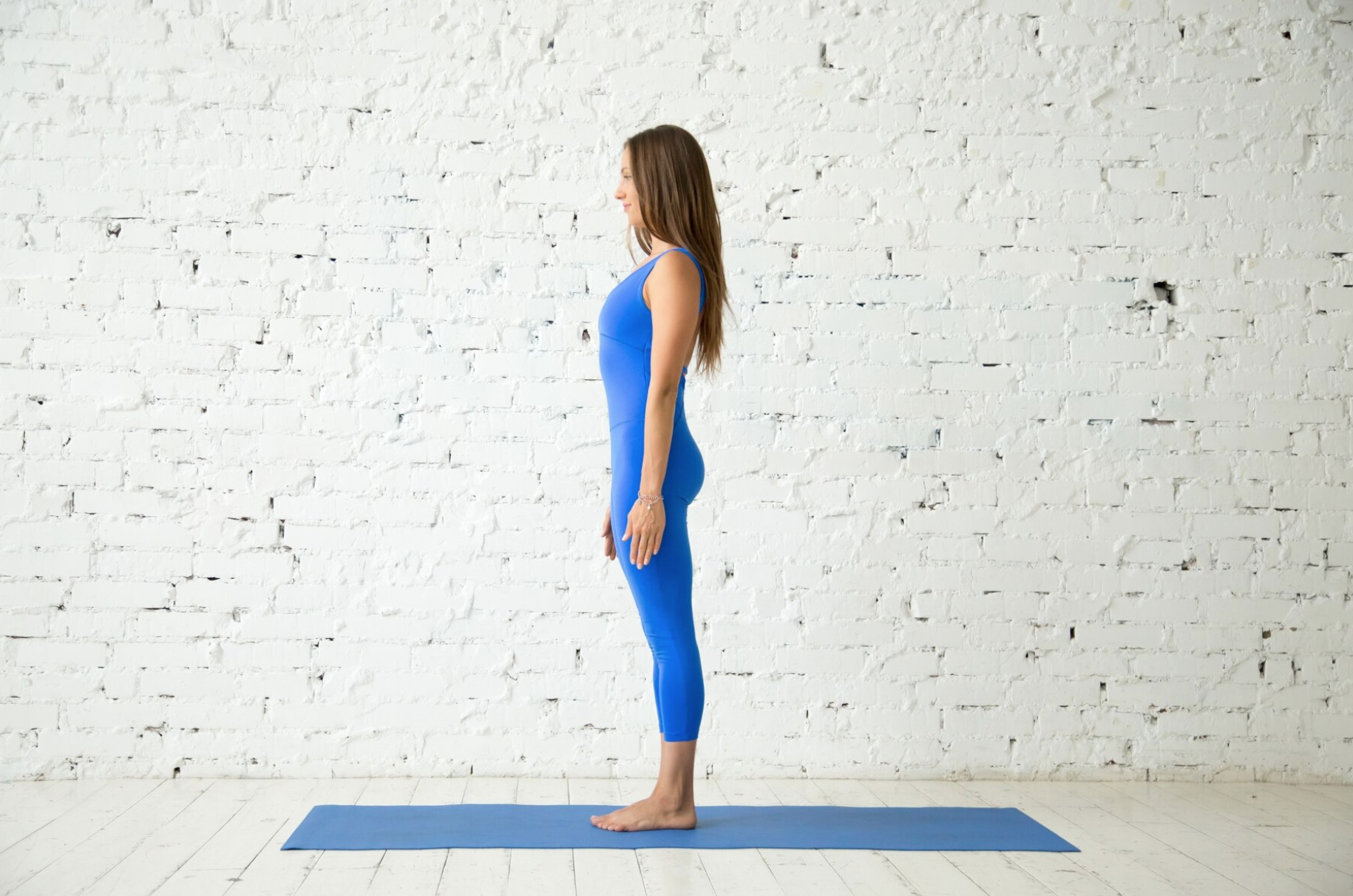
Considered as the mother of all yoga poses, the mountain pose only looks easy but this pose is the foundation for many other positions that require awareness and balance. It is through this pose that one finds the proper alignment and stability for additional advanced poses.
How to:
Stand with feet together and arms at your side. Ground your feet, making sure to press all four corners down into the ground. Next, straighten your legs, then tuck your tailbone in as you engage your thigh muscles. As you inhale, elongate through your torso and extend your arms up, then out. Exhale and release your shoulder blades away from your head, toward the back of your waist as you release arms back to your sides.
Benefits:
This standing pose improves posture and concentration. Additionally, the mountain pose strengthens the leg muscles, lengthens the spine, and releases tension from the face.
7. Angle pose (Konasana)
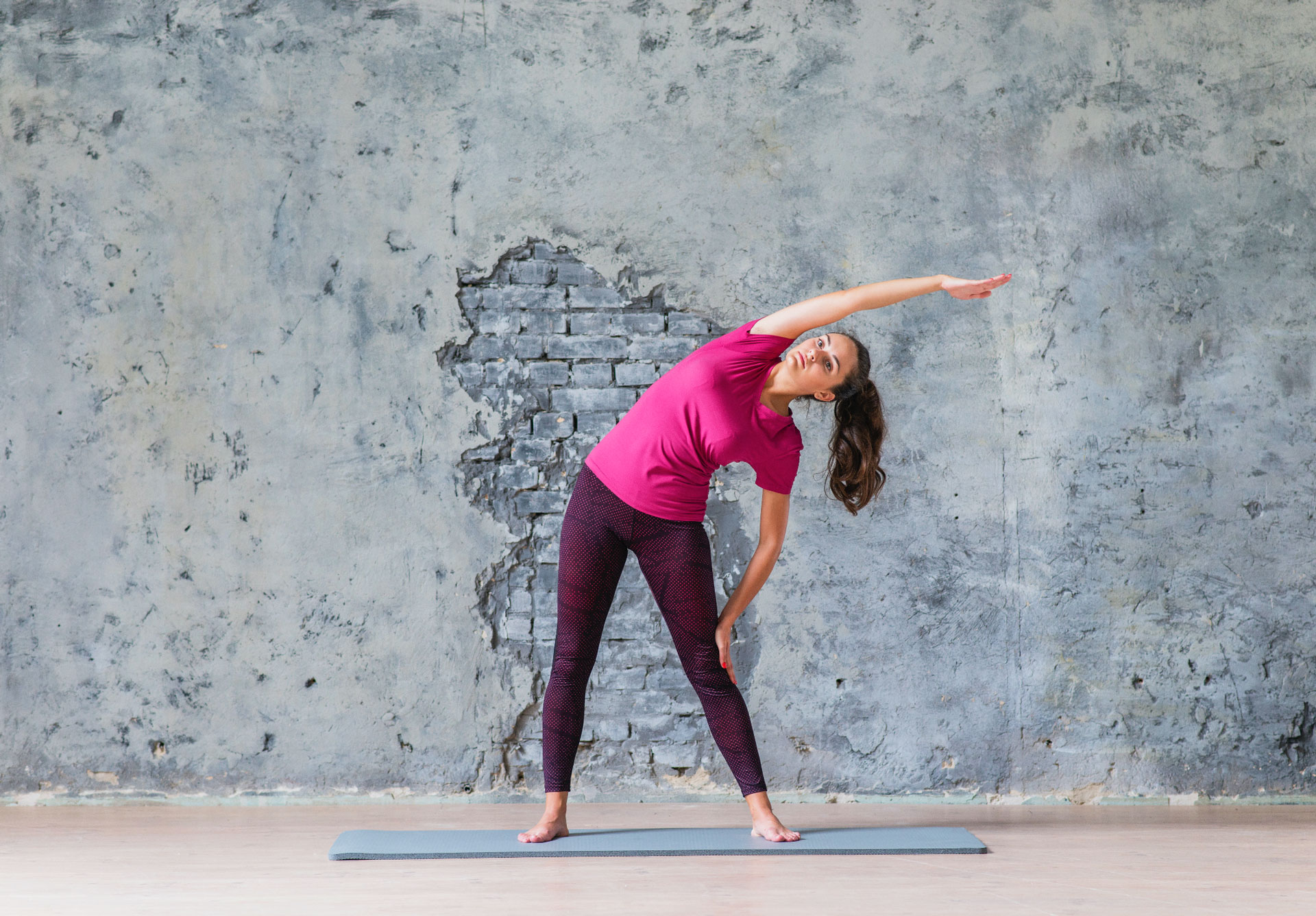
Feeling stiff and sore after a long day at work? Get a good stretch throughout your body and relieve back pain with this easy angle pose.
How to:
Stand straight with feet hip-width apart. Hold your arms alongside your body. Breathing in, raise your left arm up. Keep the fingers of your left hand pointed towards the ceiling. Breathing out, bend to the right. Keep your chest facing forward and your left arm pointing up. Keep both knees straight. Turn your head to look up at the left palm. Breathing in, straighten your body back to the center. Exhale as you bring the left arm down. Repeat with the right arm. Bring your upper body to a steady angle towards the left. Keep your chest forward, stretching your right side.
Benefits:
This standing pose helps those suffering from constipation and sciatica. Augments flexibility of spine and tones the upper body, including arms, legs, and abdominal organs.
8. Warrior 1 (Virabhadrasana 1)
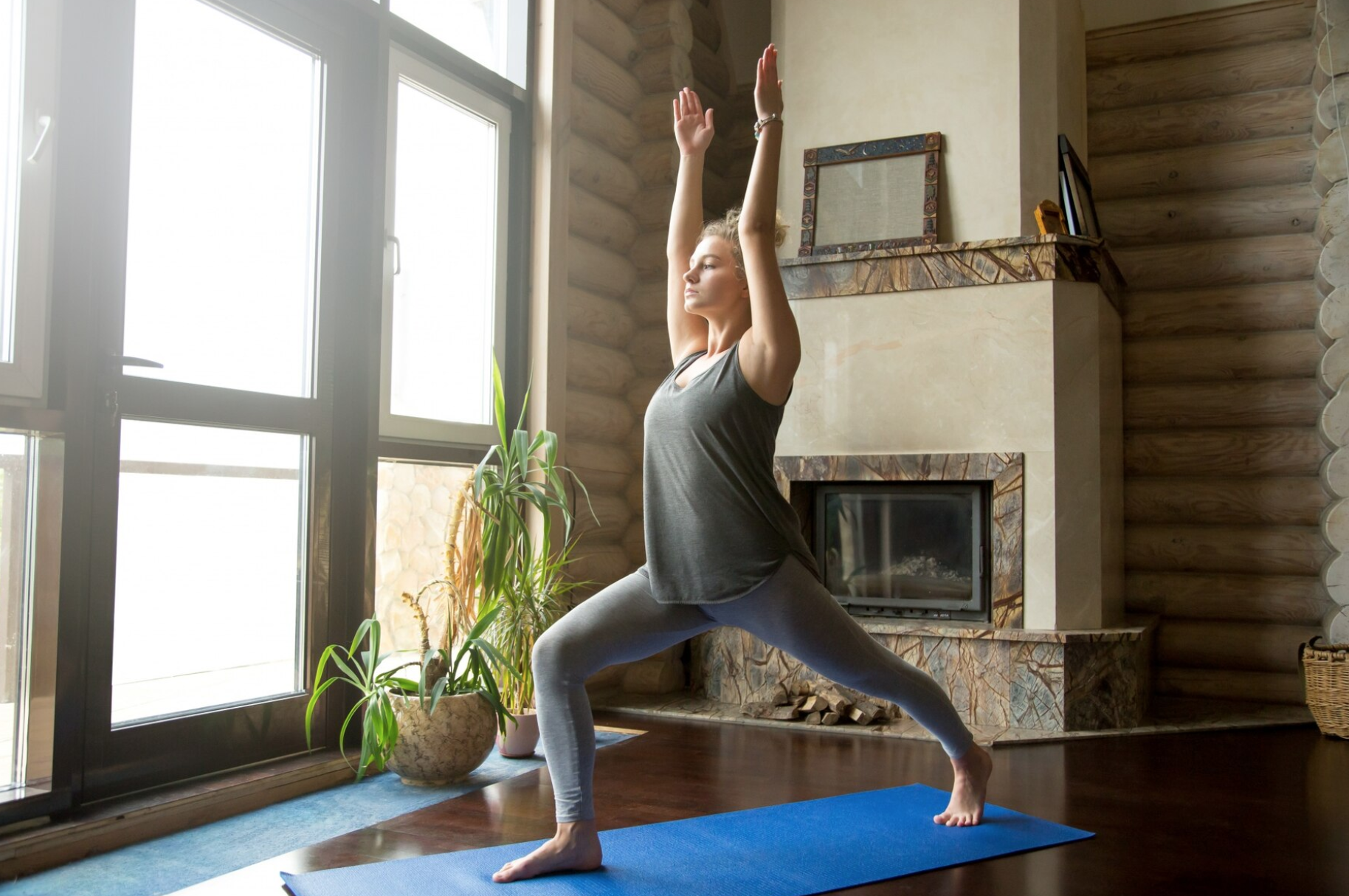
Warrior pose, or Virabhadrasana, is one of the most powerful poses in a yoga routine. Channel your inner strength, courage, and poise with this dynamic posture!
How to:
Start in mountain pose. As you exhale, step your left foot back about four feet, so you’re in a lunge position with the right ankle over the right knee. Raise your arms straight overhead, biceps by ears, and turn your left foot about 90 degrees to face the left wall. Align your left heel perpendicular with your right heel. Expand your chest and pull your shoulders back, then lower down toward the floor as you lift your arms up. Make sure your hips stay square to the front, as you continue to breathe.
Benefits:
This easy pose improves balance in the body, augments stamina, and releases stress in the shoulders. Also, strengthens the legs, arms, and lower back. The warrior pose is very helpful for those leading a sedentary lifestyle.
9. Full yogic breath
Full yogic breathing is a simple deep breathing technique that offers so many benefits.
How to:
It is a combination of belly breathing, chest breathing, and clavicular breathing. Here is a simple video, practice step by step along with it.
Benefits
Full yogic breathing is a simple deep breathing pranayama with many profound benefits. It revitalizes the entire body, expands your lung capacity and helps you relieve stress and anxiety.
10. Corpse pose and yogic sleep (Savasana and Yoga Nidra)
Always spare 5-20 minutes for relaxation after your asana practice. If you have only 5 minutes, relax in savasana (corpse pose). Elaborate yoga nidra with savasana can relax you totally.
How to:
Lie down on your mat, relax and follow the instructions for yoga nidra on this video as guided by Gurudev Sri Sri Ravi Shankar.
Benefits:
Always end the routine with a resting pose or Yoga Nidra. It prepares the nervous system to absorb the effects of all yoga postures performed.
10 Yoga Poses
Try Sun Salutation when you feel ready
Practicing Sun Salutation is one of the most popular yoga sequences. It is a flowing sequence made up of 12 basic yoga poses. Download our free ebook on “Sun Salutations: Your Full Guide to Master the Age-old Yoga Sequence” and enjoy this beautiful practice.
Learn more
Whether you want to learn some basic poses before you take a class, get some tips on where to begin with an at-home practice, our simple guide to yoga for beginners will help you begin your yoga practice and understand some basic yoga philosophy. Download our free gift for you now.
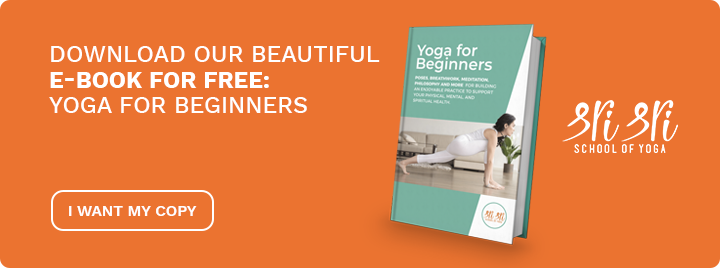
Wish you all the best as you begin your yoga journey!

